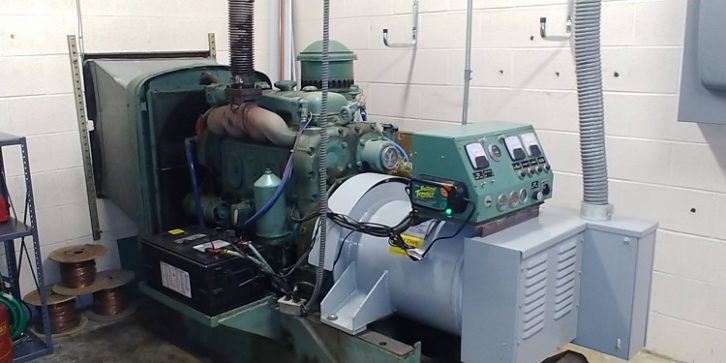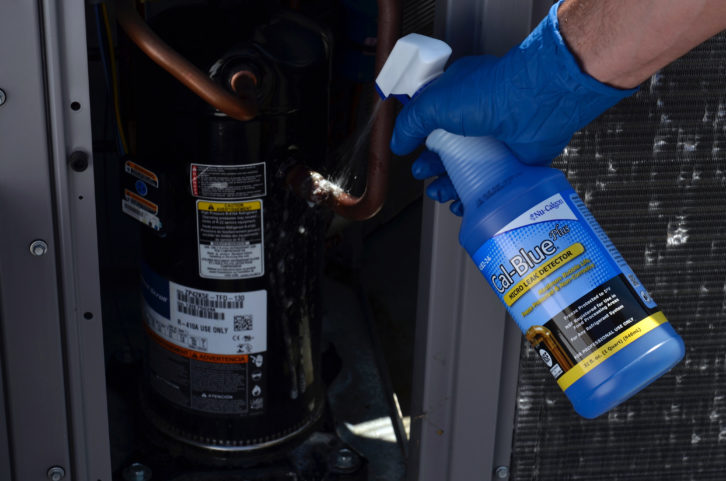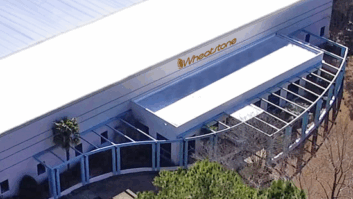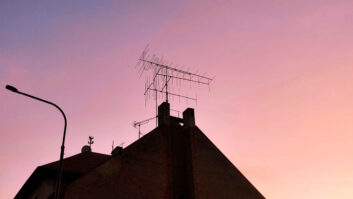
David Morgan, CBRE, is the director of engineering for Sinclair TeleCable-Norfolk in Virginia. He enjoys the generator tips we share.

He sent pictures of the emergency generator at WNIS(AM) 790 in Norfolk. It is a G.M. Diesel (from Detroit) Model 4-71. The gray electrical generator portion was replaced in 2003 after the old one self-destructed during Hurricane Isabel.
David reminds us of the importance of checking radiator hoses, seen at the upper end of Fig. 2, and to inspect the belts that interconnect the engine pulleys.
First disable the generator so it won’t start while you are inspecting it. Then gently squeeze the hoses. They should flex, and there should be no visible cracks in the rubber during flexing.
Before turning the generator back on, conduct a visual inspection of the belts. (A strong trouble light will help in this inspection.)
Locate the longest unsupported section of belt and inspect it for abnormal wear, such as glazing on the side of the belt or missing chunks of the belt. The latter can be caused by high temperatures from the heat of the engine or friction due to belt slippage.
Next, start the generator up and listen. Noise is the first indication of belt (and possibly pulley) problems. Belt squeal during start-up signifies slippage. Check for glazed sides of the belt. Also listen for squeals during a load test as the station’s electrical load is transferred to the generator. Under normal conditions, changes in RPM should not cause the belt to slip.
As the engine runs, watch for erratic movement or flutter in the belt as it turns. Either warrants further inspection by a generator technician.
As with a car tire, friction between the belt and pulleys will wear the belt away. The most common area of wear is on the tops and walls of the belt ribs. Eventually, this friction causes the grooves of the pulleys to bottom out on the grooves of the belt, with belt slippage as the result.
Poor alignment with the belt and pulleys is the biggest cause of noise. This condition can also cause belt fraying and premature wear.
The best way to inspect for this condition is to sight down the side of the belt to make sure the belt edge doesn’t make any bends away or toward the engine. Any deviation you can spot with your eye is excessive.
One other maintenance tip concerns care when adding oil or coolant to the generator engine. If either comes in contact with the belt, slippage can increase, and the slippage can cause even higher friction temperatures, resulting in more belt damage. Also inspect the seals around the water pump and the engine oil seals; leaks can contaminate the belt surface.
These tips about squealing belts also apply to air conditioning air handlers. If you hear a squeal, investigate!
Slow-leak finder
David wraps up his comments by noting that this generator recently powered the station for about 38 hours after Tropical Storm Isaias blew through the Norfolk area. Even older generators, when properly maintained, can provide long and reliable service.
David adds a comment about using soapy water to detect leaks in transmission lines and the associated manifolds and nitrogen tank fittings.
To spot difficult or very slow leaks, he has found it easier to use blue leak detector spray, such as Cal-Blue Plus brand from Nu-Calgon (www.nucalgon.com), which was developed for HVAC technicians to spot refrigerant leaks.

Unlike soapy bubble water, this spray stays really gooey for some time after spraying; the adhesion allows time for slow leaking nitrogen to bubble out. And because of its high viscosity, the bubbles are last a long time. The viscosity also enables the product to remain in contact with the applied surface for an extended period, making slow leaks easier to spot.
Cal-Blue Plus is non-corrosive to metal, meaning fittings and copper tubing will not be damaged by the compound.You can find it at places like Grainger and Home Depot, or via Amazon.
John Bisset has spent more than 50 years in the broadcasting industry and is in his 31st year writing Workbench. He handles western U.S. radio sales for the Telos Alliance. He holds CPBE certification with the Society of Broadcast Engineers and is a past recipient of the SBE’s Educator of the Year Award. Workbench submissions are encouraged, qualify for SBE Recertification, and can be emailed to [email protected].







